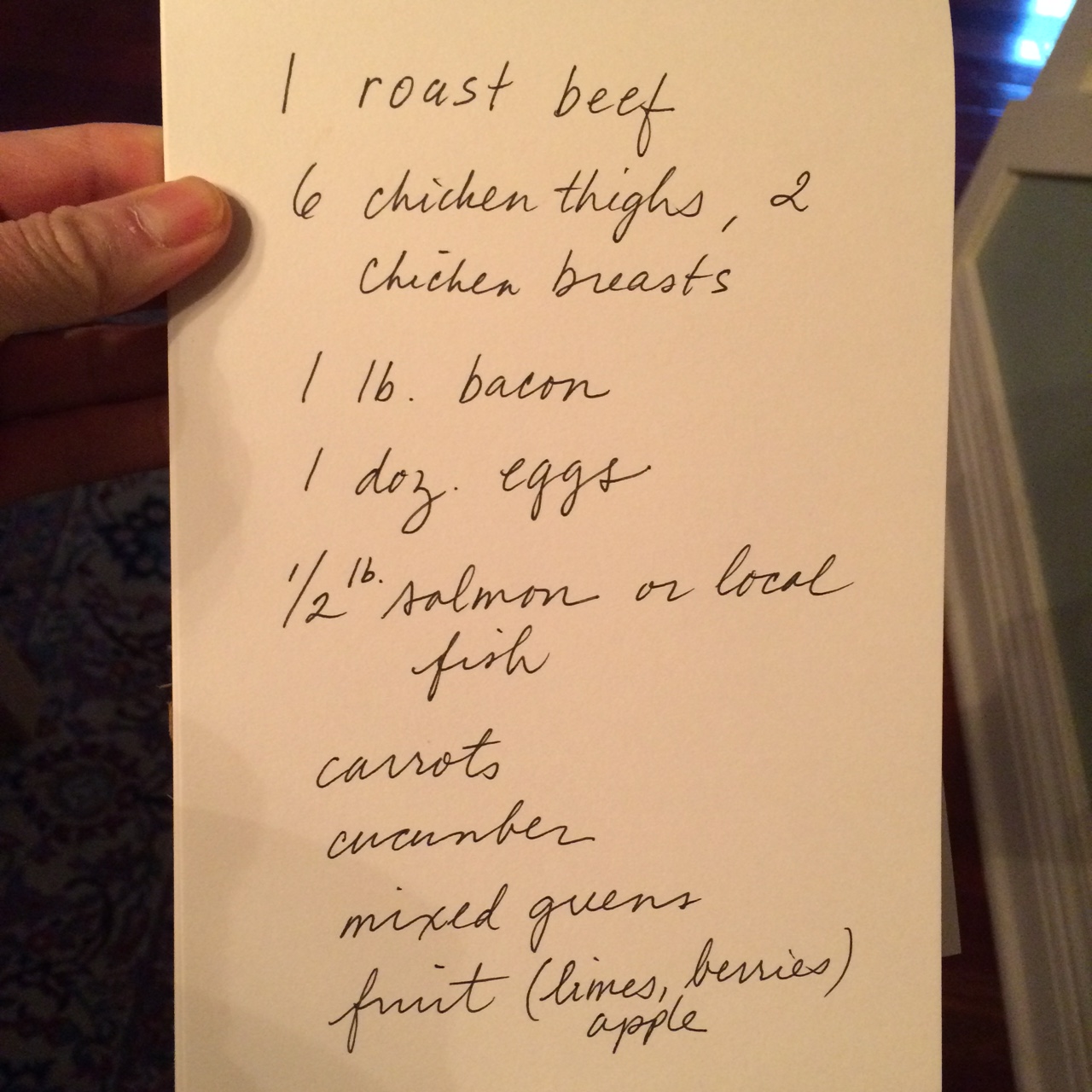It’s that time again. It’s time to travel, and cook for myself outside my own kitchen!
Next week, I’m climbing into a plane and flying with my road bike to Maui to participate in a triathlon camp. Unlike the last time I travelled for the same camp, I’ll be responsible for about 90% of all my food and snacks for a very active week full of epic bike rides, ocean swimming and snorkeling, hikes through bamboo forests and red dirt trails, and running on beaches and trails on this beautiful island.
My chiropractor mentioned a truth that I found ironic. He said that a successful Ironman competition was not just about who was strong enough to go the distance — a 2.4mile swim, 112-mile bike course, and a 26.2 mile run – but who could eat and drink enough to cover that distance!
When 70% of all surveyed athletes state that they have experienced GI distress during a race or sport performance, it’s a serious concern. So the Sensitive Celiac takes food seriously! And of course, I make food fun again by showing you just how easy it is, once you know what you need to eat, to simplify the process, organize yourself, and make tasty and nutrient-dense meals and snacks that will help you take on the activities of life that thrill you.
You might not ever do an Ironman, but I can tell you, just snorkeling in the ocean makes everyone hungry! Everyone needs to eat. Having food allergies and intolerances or a special diet means planning, preparation, and if at all possible, cooking your own food.
So, wanna know how to menu plan like a boss?
Menu Planning Like a Boss

A paper list works just as well for grocery shopping. Post It notes on a calendar with the days meals can be used, but if you’re a digital fiend, try Trello.com for menup planning.
Select an planner
Maybe you are a paper gal. You like it where you can see it, and you want to take it with you. That’s fine. You can take my options and just write them down on paper. Or use Post-It Notes, one for each day of the week, and place them on a paper calendar, if that floats your boat.
I am using Trello.com because it’s really easy to be hyper-organized on this productivity platform. You can drag and drop recipes, assign “due dates” for activities, such as which day to do grocery shopping, and then create Breakfast, Lunch, and Dinner mini-boards.
The one downfall that Trello doesn’t have is a specific app or board that has a shopping list. Instead, you can make a list of the foods you need, drop it in, then drop in the names of the grocery stores located within ten miles of your accommodations.
By calling ahead or looking online, you can see by location what kind of grocery stores you’ll have access to (discount, organic, standard, co-op, etc). Yelp is one way to do that, since it will locate the grocery stores closest to where you’ll be staying. In the meantime, I’ve used a white board with my shopping list, and taken a picture of it on my phone camera. I’ve also used an app called Buy Me A Pie; it’s a simple app that you can put your grocery list into, but I find it a little cumbersome to use.
Dial in Your Favorite Macro-balanced Meals
For my trip, I’ll have to plan for the following:
8 breakfasts (bacon, eggs, fruit, Paleo wrap, rice, avocado, goat yoghurt, pancrepes, )
7 lunches and/or food on the bike or run (sweet potato, bacon bits, left over meat, crackers
7 dinners (mixed greens wilted, roasted veggies, a meat main dish, a small serving of a starch, an occasional dessert/treat)
14 snacks (almonds, chocolate nibs, gf crackers, goat cheese, fruit, dates, gf beef jerky)
3 mobile meals (for the flight out and the flight back, soakable gf rice sticks in a thermos, beef jerky slices, dried seaweed)
Once you know how many meals you need to prepare, consider what you like to eat. For my low-carbohydrate, high protein meals and snacks, I make a list and consider serving size.
For example, when considering what I actually want to bring with me because it may be difficult to find at my destination, I’ll drag-and-drop the following into my packing list:
Dried goods: Tinkyada brown rice elbow pasta, Annie Chun’s Pad Thai, seaweed, Paleo Wraps, spices, gluten free crackers
Bottled or canned goods (unopened): 3 cans coconut milk, one jar diced tomatoes from Italy, pure maple syrup, coconut oil for cooking, coconut aminos (and make sure each bottle is carefully wrapped in a sealed plastic bag and surrounded cushion).
Dehydrated food: homemade beef jerky, kale chips, parsnip chips
Emergency food: sealed food that is pre-made, low-process and few ingredients. These are consumed when you have absolutely no other choices available, and you eat them in lieu of eating out somewhere or accepting someone else’s food when you don’t know what it contains. An example of this for me would be an EPIC bar. I will pack enough bars to have one per day available, knowing that it is unlikely I will need them except on one or two occasions where I’ll need to have two of them. They can also make up the food for the mobile meals required for being on long airplane flights.
Storage containers, parchment paper for baking (to prevent cross contamination if using a shared oven), and your own sponge (for community sinks)
When bringing food, make sure that what you are bringing is legal. Certain fresh foods, seeds, fruits, or vegetables may be prohibited.
Ready, Set, Grocery Shop!
Armed with your list, you’ll spend the most time in the grocery store along the outside aisles in the meat, dairy, and fruits and vegetables areas. If you brought your own dried goods, there is really nothing for you in the center (the traditional place for junk food and high-processed items). You may need to shop for cooking oil (unless like me, you bring your own in the original sealed jar), but other than that, your grocery store time is focused on fresh food.
While traveling, this is not a time to try new packaged foods, even if they say, “gluten free”. Unless you’re willing to do the work of calling up a manufacturer to get the exact details of what their idea of “natural flavors” means, it may be risky. Food allergic individuals need to remind themselves that they are not paranoid and high maintenance; we are simply risk aversive when it comes to food and our health and well-being. Is a day down because you’re in the bathroom worth that new food?
At your destination, you will shop for all your food at once if you have a large enough refrigerator to store it. I’ll purchase seafood, chicken thighs or chicken breasts, and a small roast, bacon that I can sub for deli meat for a mobile meal, mixed greens, salad fixings, berries, and a few apples to bake a small dessert. If the avocados look slightly firm and can withstand a couple of extra days, I’ll purchase some of those as well.
The first time you purchase all your food for a week at one time, there is a little sticker shock as you cash out. I can easily spend upwards of $200USD if the food is organic, natural, or harder to find at the destination. You would be spending far more if you were eating out, only you spend it a meal at a time. When thinking about making nutrient-dense meals, don’t be afraid to invest in quality cuts of meat, in-season fruits and vegetables, and to supplement with low-process food where necessary.
Build-a-Meal Planning
Build each meal around the main dish, and either write these on a paper planner or drop them in your planner app. For example, if I purchase six chicken thighs and two chicken breasts for the entire week, that makes up four to five meals with chicken in it, whether it’s a lunch meal or dinner.
The chicken baked simply in the oven with no spices can be combined with pasta, added to risotto or brown rice, stir-fried with gluten free noodles, or served cold and shredded in a rice wrapper or coconut Paleo wrap. Think about the different ways you want to serve up that chicken, and then drop the recipes into each calendar day for the meal you’d like to serve it.
You can essentially build a meal around every type of protein dish you made, whether from animal protein, plant protein, or dairy. If you have a vegetarian or vegan eater with you, you can have them build their meal with the other side dishes you keep free of animal protein. Your own Tupperware is really helpful; using a kitchen’s plastic containers may not be safe.
Add vegetables or fruit and a small amount of starchy carbohydrates to each meal, according to your dietary needs. When meal planning, you’re estimating how much food you need to purchase for the entire week (or whatever time you’re working with), and you don’t want to have a lot of leftovers to throw away.
What I look forward to the most is having meals that truly fuel and satiate me, while not missing a beat with the other participants of the camp. Socializing while eating is an important part of the psychology of the table and the enjoyment of food. Keep food prep easy and fun with meal planning, and that will leave you with plenty of time to enjoy the company of others.




